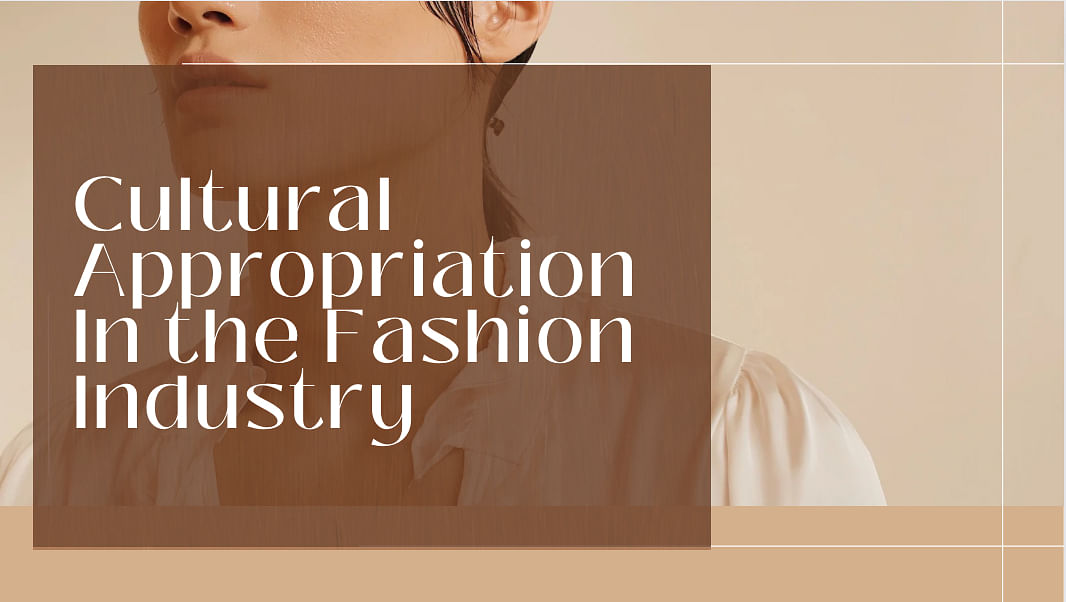
This article delves into the complex terrain of cultural appropriation in fashion, examining what it is, exploring notable examples, and discussing how the industry can better navigate the delicate balance between appreciation and insensitivity.
I. Understanding Cultural Appropriation
Cultural appropriation is the act of borrowing or adopting elements of one culture by members of another culture, typically a dominant or privileged group. It involves taking traditional symbols, clothing, accessories, hairstyles, or practices from marginalised or minority cultures and using them out of context, often for personal or commercial gain.
1. Elements of Cultural Appropriation
Fashion: Wearing clothing or accessories that are culturally significant to another group.
Hairstyles: Adopting traditional hairstyles without an understanding of their cultural or historical context.
Symbols and Art: Using culturally significant symbols, patterns, or art without permission or understanding.
Practices: Participating in or adopting cultural practices or rituals without respect for their origins.
2. The Power Dynamic
Cultural appropriation is often intertwined with a power dynamic. The appropriating culture is typically in a position of power, while the culture from which elements are borrowed is often marginalised or oppressed. This dynamic amplifies the negative impact of appropriation.
II. Notable Examples of Cultural Appropriation in Fashion
To understand cultural appropriation in fashion, it’s essential to recognise some notable examples where the line between appreciation and insensitivity has been crossed.
1. Native American Headdresses
The use of Native American headdresses in fashion, particularly in music festivals and runways, has stirred controversy. These headdresses hold immense cultural significance and are considered sacred by many Indigenous tribes. Their casual adoption in fashion shows a lack of respect and understanding.
2. Cornrows and Braids
Styles such as cornrows, box braids, and dreadlocks, deeply rooted in African and African American culture, have been appropriated without acknowledgment of their origin. Some individuals and fashion brands have commercialised these styles while ignoring their cultural significance.
3. The Infamous Kimono Controversy
In 2015, Kim Kardashian West faced backlash for appropriating the traditional Japanese kimono by using the term for her shapewear line. Many Japanese people considered it disrespectful, as the kimono is deeply intertwined with Japanese culture and history.
4. Bindis and Henna Tattoos
The use of bindis (decorative forehead ornaments) and henna tattoos from South Asian cultures has been popularised in Western fashion. Often, these elements are stripped of their cultural context, and their significance is diminished.
5. Geometric Patterns
Geometric patterns and tribal motifs from African, Indigenous, and other cultures have been used in fashion without giving credit to their origins. These patterns can lose their cultural significance when stripped of their context.
III. The Fine Line Between Appreciation and Insensitivity
Cultural appreciation, as opposed to appropriation, acknowledges and respects the cultural significance of elements being borrowed. It involves understanding the context, history, and meaning of the borrowed elements and often involves collaboration or permission from the source culture. In fashion, finding the balance between appreciation and insensitivity is crucial.
1. The Importance of Education
Understanding the history, significance, and context of cultural elements is vital. Education plays a critical role in distinguishing between appreciation and appropriation. Brands and individuals must take the time to learn about the cultures they draw inspiration from.
2. Collaboration and Inclusivity
Collaborating with individuals and artisans from the source culture can foster appreciation rather than appropriation. Inclusivity is key to ensuring that voices from the culture being celebrated are heard and respected.
3. Giving Credit
Fashion brands and individuals should give credit where it’s due. Acknowledging the cultural source of inspiration, rather than appropriating it, is a sign of respect.
4. Avoiding Stereotypes
Stereotyping cultures through fashion perpetuates harmful biases. Avoiding caricatures and stereotypes is a vital step in appreciating rather than appropriating cultural elements.
IV. How the Fashion Industry Can Do Better
The fashion industry, as a powerful influencer of global culture, has a significant role in shaping the conversation around cultural appropriation. To navigate the fine line between appreciation and insensitivity, the industry can implement several key practices:
1. Diverse Representation
The fashion industry should prioritise diversity at all levels, from designers and models to executives and decision-makers. Inclusivity ensures that diverse perspectives are considered, preventing insensitive choices.
2. Cultural Consultants
Brands should engage cultural consultants and experts when drawing inspiration from a specific culture. These experts can provide guidance and ensure that appropriation is avoided.
3. Education and Awareness
Fashion brands should invest in education and awareness programs for their teams. This includes understanding the cultural significance of borrowed elements and ensuring they are used respectfully.
4. Transparency and Accountability
The fashion industry should be transparent about the sources of inspiration for their collections. Accountability for cultural appropriation should be taken seriously.










